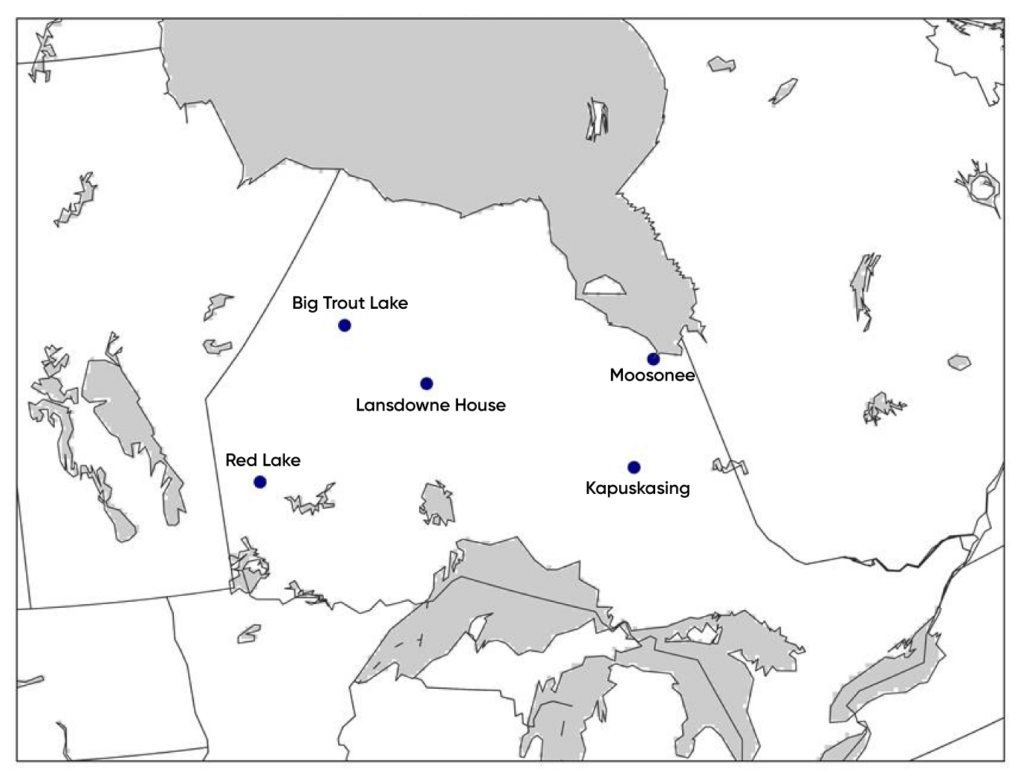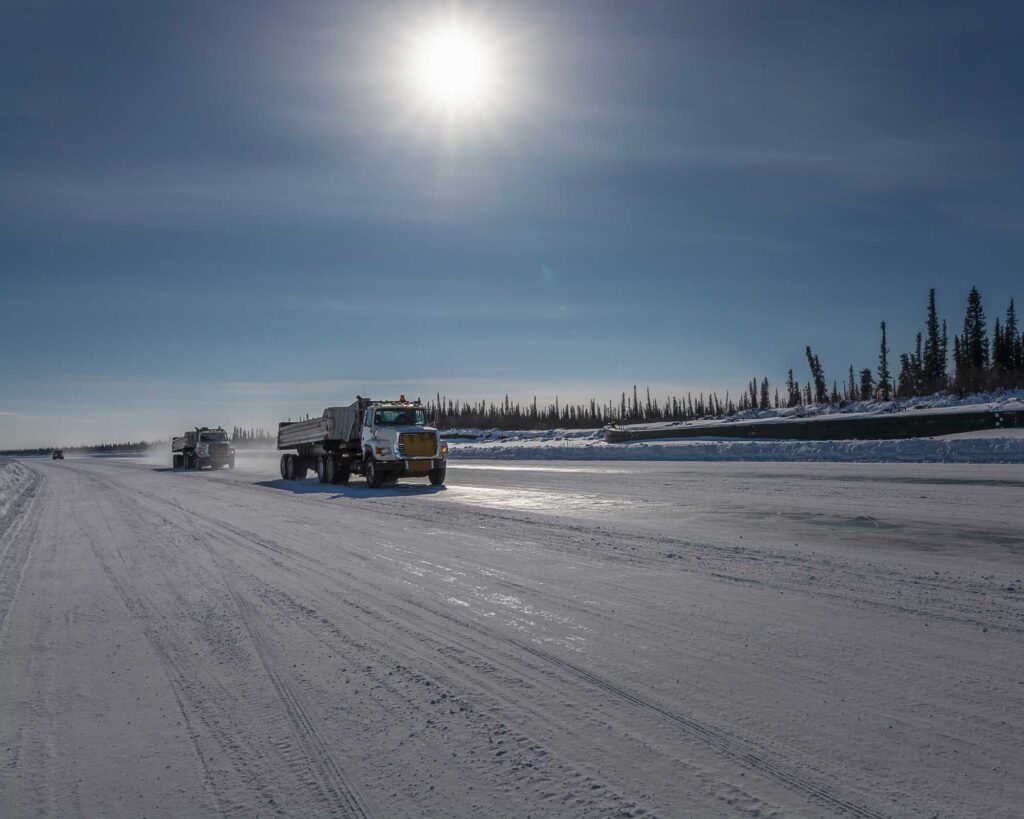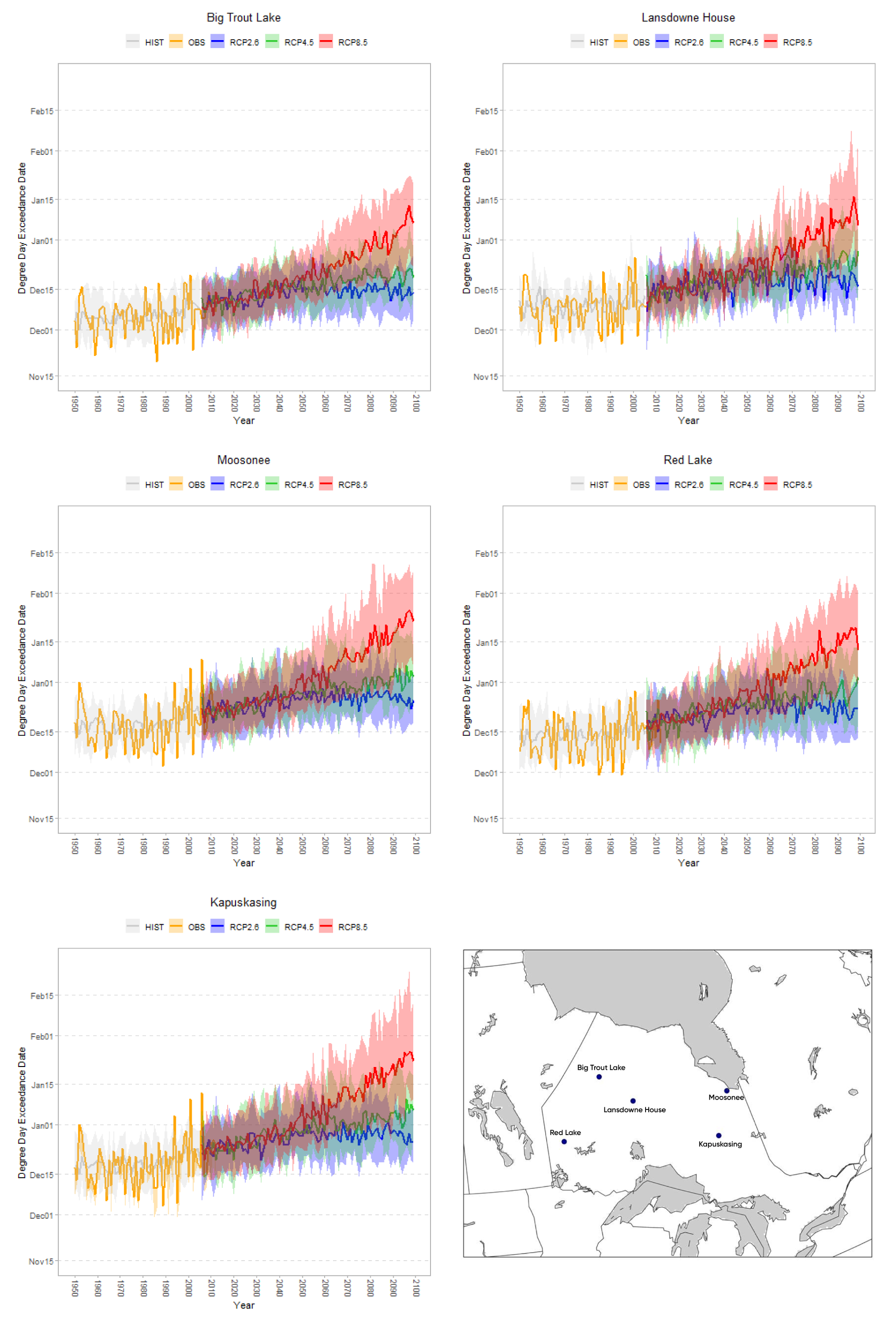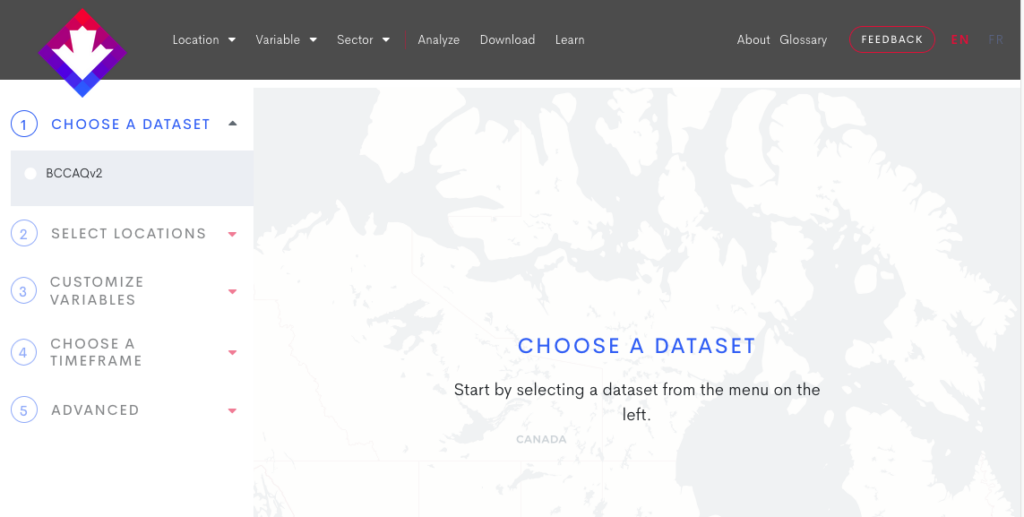Box 2. A Note on ANUSPLIN vs Future-Projected Data in Figure 1
Using the freezing degree day (FDD) accumulation criteria outlined above, there are years in Figure 1 in which the start dates for ice road construction appear to be delayed in the gridded historical (ANUSPLIN) datasets (shown in orange). It also appears that the variability in the timing of reaching the FDD accumulation threshold is increasing in the latter portion of the gridded historical record for several locations, particularly for Kapuskasing and Moosonee. Examination of the climate model simulations, however, shows that comparable conditions are not projected to occur until mid-century and beyond.
There are a number of reasons why there may be differences between model simulations and observed conditions, and it is important to recognise the differences between the two types of data. First, climate models are useful but not perfect; they operate at relatively coarse spatial resolutions and so cannot directly include all climate processes. Our understanding of the climate system is also not complete, and models continue to evolve as our understanding improves. Second, it is not expected that climate simulations will match observed conditions on a day-to-day or even year-to-year basis. Each climate simulation is a single representation of possible climate conditions in response to atmospheric concentrations of greenhouse gases and aerosols – to be able to simulate a climate which perfectly matches observed conditions we would need both a perfect climate model and perfect knowledge of the composition of the atmosphere, neither of which we have. Due to natural variability in the climate system, the observed climate is itself one realisation of many possible climates that could have resulted from the same atmospheric composition.
Additionally, the gridded ANUSPLIN dataset has been interpolated from information observed at point locations. In some regions, particularly Canada’s North, these observations are sparsely distributed, which can affect the robustness of the gridded dataset. What is expected, however, is very similar statistical properties between the climate simulations and the observed conditions over longer time periods (e.g., 30 years), which is the case in the examples shown in Figure 1. Simulations of future climate are used to explore the range of possible future conditions and trends over time rather than to focus on individual climate model results for specific years.






